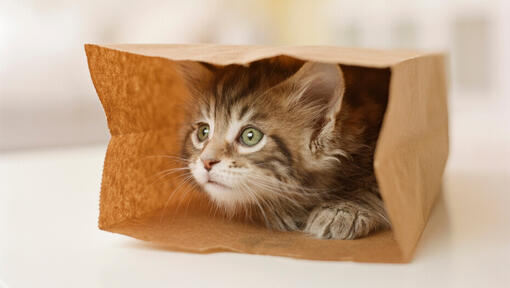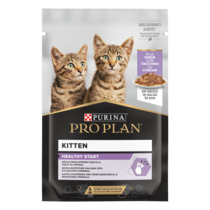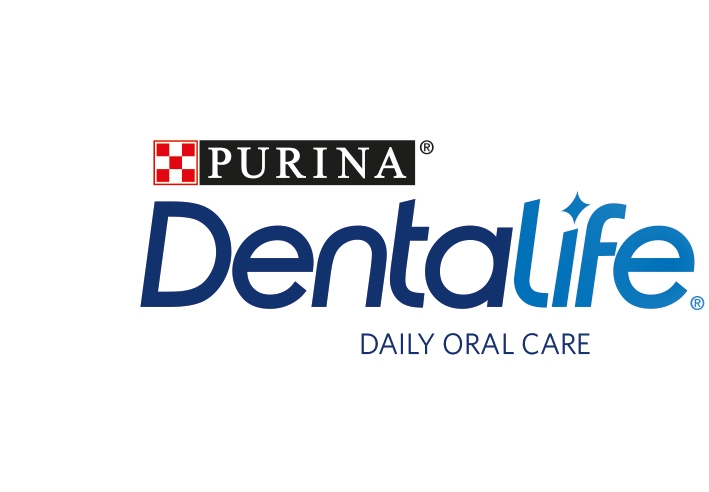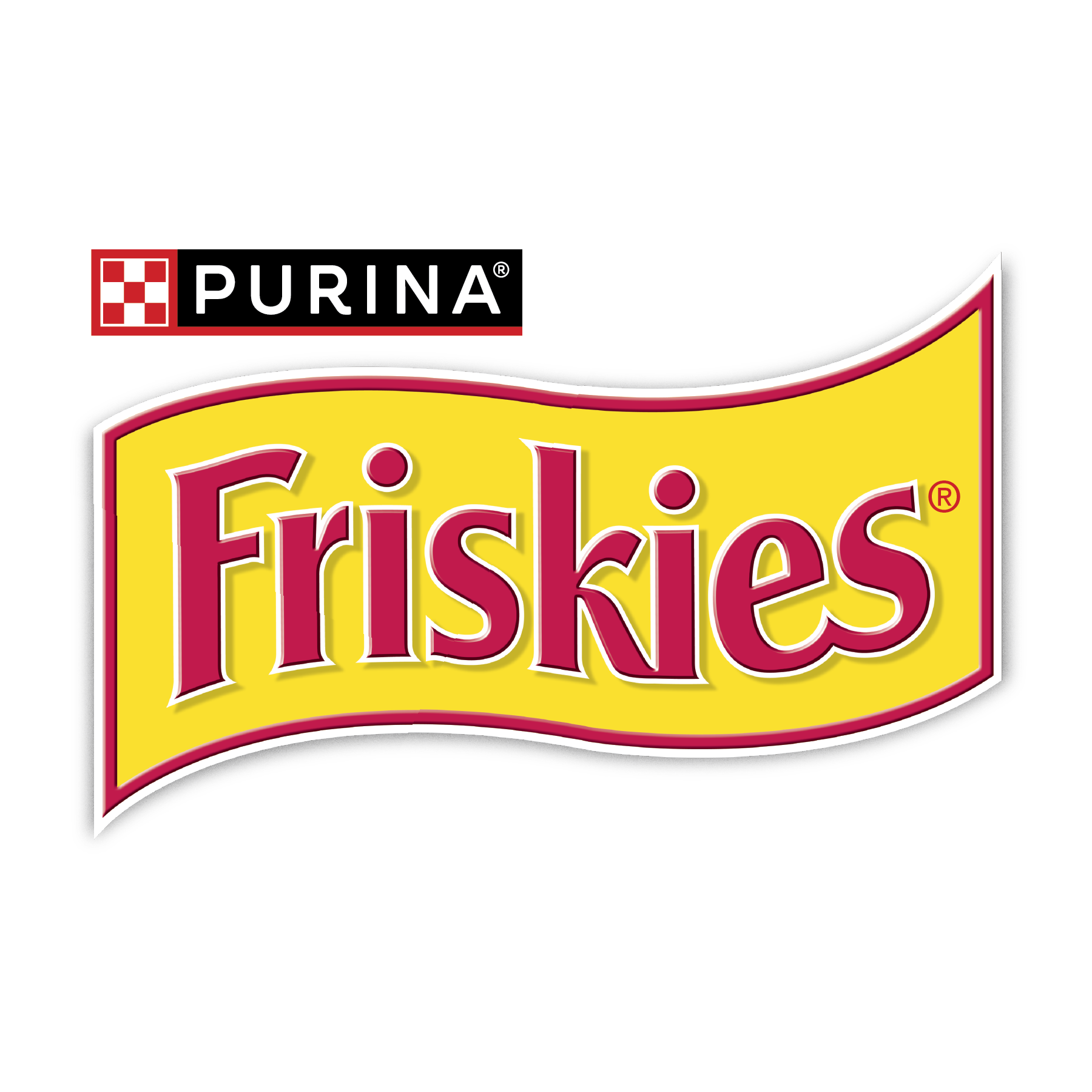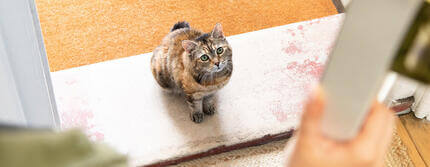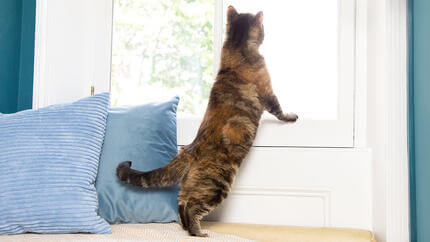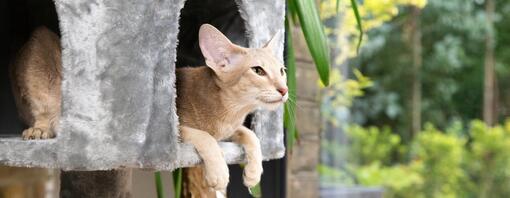

From trailing leads to irresistible, but dangerous food scraps, there is so much to be mindful of when welcoming a new cat. Find out how to make your home safe for your pet.
Playful, curious and extremely mischievous, cats won’t wait long before taking over your entire house and everything that’s in it. So, before you welcome your little ball of fur, make sure you’ve got the basics covered by cat-proofing your entire home. From dangling cords to abandoned shopping bags and the beauty products on your nightstand, here is the list of unsuspecting items that can cause serious trouble in the company of a feline.
Kitten and cat-proofing your home
With so many things to consider, cat-proofing your home requires a solid plan. Here is what to keep in mind for a friendly and safe space:
1. Windows and doors
When you first bring your new cat or kitten home, keep all windows and doors closed until they’re fully settled in, have had all their vaccinations and have been neutered.
2. Plastic bags
Store your plastic shopping bags somewhere safe, as they can be a real hazard if chewed and swallowed or hidden in.
3. Kitchen appliances
Remember to always close doors to the oven, fridge, microwave, dishwasher, tumble-dryer and washing machine. Add notes to the doors of these appliances to remind people to check inside for exploring cats before using them. Small kittens can find a warm dryer or a shiny washing machine drum irresistible!
4. Toilet lids
Keep toilet lids down, so your kitten can't fall in or drink (or even try to use the toilet themselves!). You may need to leave a note to remind visitors or forgetful housemates.
5. Trailing cables
Hide all trailing electrical cables behind furniture. You can buy thick cable protectors from most hardware stores which are placed over cables to make them totally chew-proof.
6. Bins
Check that all your bins in your kitchen and bathroom have closable lids that are fully paw-proof, and never leave bin bags where they can be raided!
7. Open fire sources
Lit candles, burning incense or oil burners are just asking for trouble – naked flames and fluffy cats do not mix. If you have an open fire, make sure that it has a guard in front of it.
8. Blinds and curtains
Shorten dangling blind and curtain cords and secure them safely out of paws reach.
9. Home decorations
Put away any breakable ornaments, as they won’t last long with a curious kitten on the scene.
10. Kitchen countertops
Keep your kitchen countertops clear and clean up food scraps promptly. Chicken bones might be tempting to cats but can be very dangerous, as they may splinter when chewed. The binding string used on joints of meat is also irresistible as a snack and toy, but can cause serious health problems if swallowed.
However, it’s not just food items your cat might confuse for a tasty treat. Check the dangerous substance list below whilst making a cat-friendly home and make sure they’re stored safely out of harm’s reach. Fit child-locks on floor-level kitchen cupboards, as curious kittens have a knack for opening doors.
Dangerous substances to avoid
Unfortunately, quite a lot of common household objects are highly toxic to cats even in low quantities. To keep your cat safe, avoid using the following or keep them in a secure cupboard away from prying claws:
- Cleaning and hygiene products, such as bleach, and products containing phenols (e.g. disinfectants that turn water cloudy).
- Human medicines (such as paracetamol and ibuprofen).
- Car-related products such as anti-freeze.
- Beauty or decorating products like hair dyes, white spirit and nail polish remover.
- Rat/mouse poisons – ideally these shouldn’t be used at all, as your cat could get seriously ill if they eat the poisoned prey. If you do have to use them, position them somewhere that your cat can’t get to.
- Slug pellets (pet-friendly versions are available).
- Mothballs (naphthalene or paradichlorobezine).
- Potpourri oils, fabric softener sheets, dishwasher detergents (all contain cationic detergents which cause corrosive lesions).
- Batteries (they contain acids or alkali which cause corrosive lesions).
- Homemade play dough (due to a high level of salt).
- Hand or foot warmers (they contain high levels of iron).
- Cigarettes, leftover coffee grounds, alcohol.
- Chocolate (this is more of an issue for dogs, but the theobromine in chocolate is also toxic to cats).
- All forms of lilies (the leaves, flowers etc.) found in bouquets or as houseplants.
- Some dog-flea products contain permethrin, which is highly toxic to cats, so make sure they’re kept out of reach and dogs are separated from cats when treated.
Don’t forget that cats love to climb too. So, if you want to protect the furniture while making your home a cat-friendly space, scratching posts can be very useful, ideally ones that include a high platform where they can hide or sleep without being disturbed. Here are some more tips for stopping a cat from scratching your furniture.

